Welcome to the world’s oldest desert at Sossusvlei National Park! Our Sossusvlei self drive safari adventure was an extraordinary mixture of exotic animals, desert landscape and potential danger. Learn everything you need to know about a self tour of Sossusvlei in the iconic Namib Desert landscape. Indeed, Sossusvlei National Park safari is one of the most amazing attractions in Namibia.
First off, what is the correct Sossusvlei meaning? Sossusvlei is two words in one, as a result, it is sometimes called “Sossus Vlei” which means “dried up marsh”. However, Sossusvlei is used as a term to refer to the entire surrounding area. Although technically, it refers to a dried up watering hole, also known as a “pan”.
Enjoy the Sossusvlei Desert Oasis
Theoretically, Sossusvlei is very popular with tourists, but Sossusvlei National Park is huge. Therefore, the tourists are easy to avoid if you are doing the self tour. How is this possible? Since most tourists travel in group they follow a very predictable itinerary. As a result, we had the entire place to ourselves for the entire day.
Our self tour of Sossusvlei was in the evening which is the best time to be climbing the giant sand dunes around Sossusvlei pan. So it was much cooler, not to mention the view of the surrounding area is like finding hidden treasure. It is indeed more precious if you can keep it for yourself.
Entrance to Sossusvlei National Park
After you arrive in Sesriem, the entrance to Sossusvlei National Park is easy to find. However, don’t forget to stop by the Namib-Naukluft National Park office and get your permit from the Ministry of Environment and Tourism.
Once you have got your permit in hand you are ready to enter the park. In addition to Sossusvlei, there is also plenty of time to visit the Sesriem Canyon in the same day. This is recommended.
Unique “Star Sand Dune” Formations
Sossusvlei National Park features towering red sand dunes which are on average about 375 meters above the Tsauchab River Valley floor below. That means they are 200 meters above their surrounding sand filled valleys. Sossusvlei’s iconic red sand dunes get their red color from the iron oxide that thinly coats the outside of each sand grain. It is the same thing as rust that actually comes from the rusting of the iron.

The Sossusvlei sand dunes located here are called “star dunes”. The star dunes of Sossusvlei are characterized by immobility due to the wind blowing in equal strength from several different directions. Their giant size is built up over time due to the wind blowing the sand in such manner that it accumulates near the crest of the dune, thus the dunes continue to grow indefinitely.
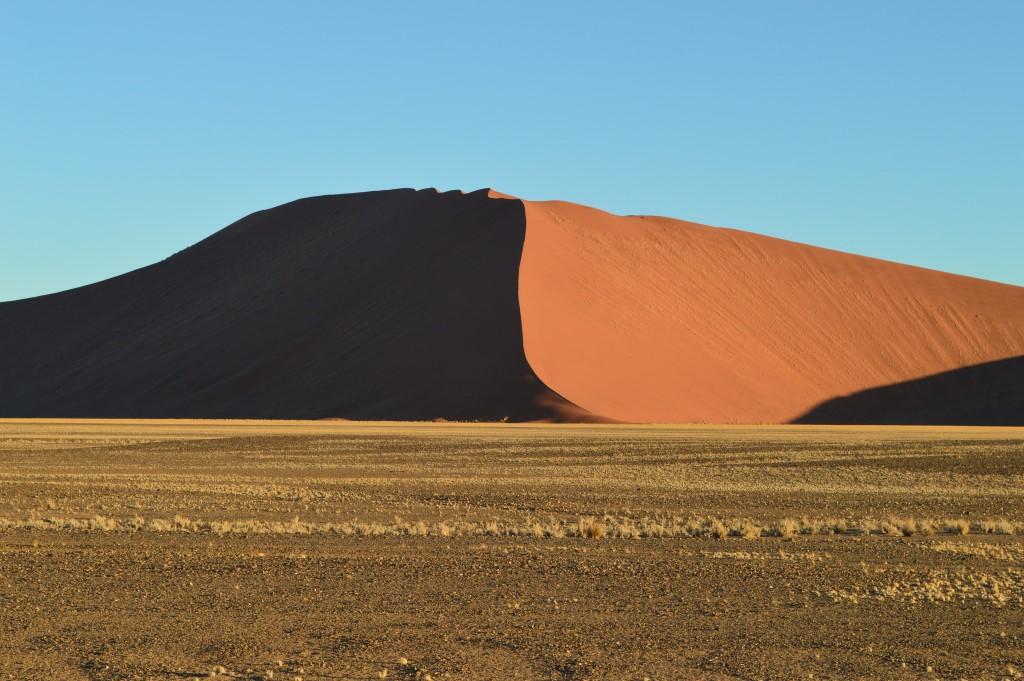
In a thousand years the giant red sand dunes will most likely still be here in the same location but they will also have grown larger in the Namib Desert environment.
Sossusvlei National Park Has Two Deserts in one
Do you know the prehistoric history of the Namib Desert? The present day Namib desert actually sits above the remains of a mush older desert dating back over 20 million years. That older desert is now fossilized, as a result it has metamorphosed into the Tsondab Sandstone. This sandstone lies beneath most areas of the present day Namib desert.
The Tsondab Sandstone also facilitates the long distance underground flows of the Tsauchab River. The water that seeps through the permeable riverbed at Sossusvlei National Park is still able to reach the Atlantic ocean. This is because it uses this sub surface passage way, flowing over the sandstone formation.
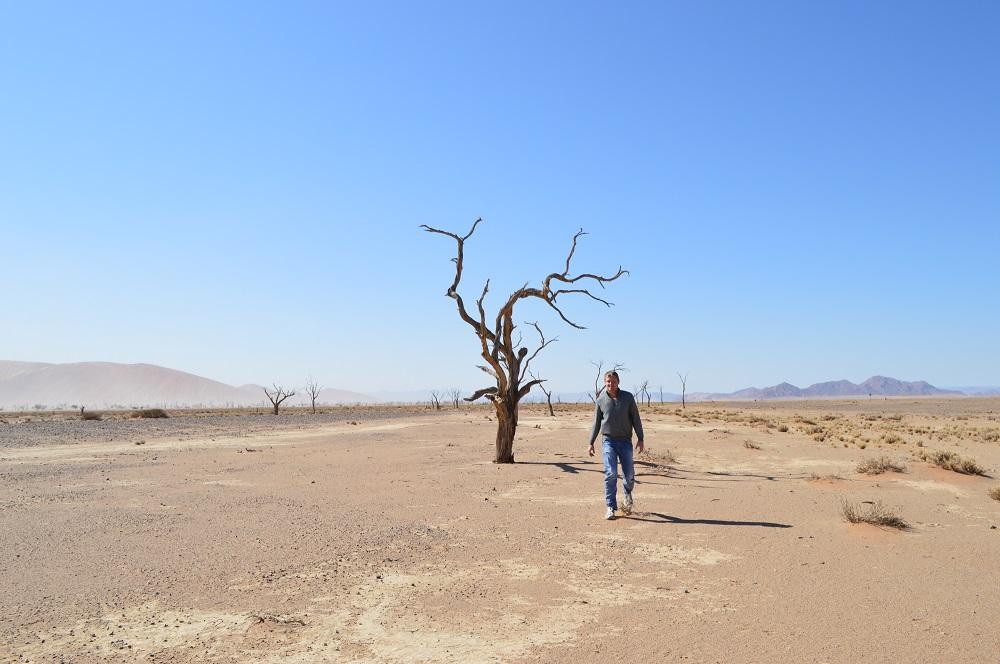
Sossusvlei Pan has a Clay Base
The Sossusvlei Pan is actually a clay pan (not salt) that is formed at the end of the sporadically flowing Tsauchab River. When it reaches the farthest point that it is possible to flow, it sinks into the Namib desert.
The pan itself is sometimes incorrectly designated as a salt pan. If you have ever visited a Etosha salt pan you will notice the distinct differences. Sossusvlei has large mud cracks that form as the water seeps away into the sand and leaves the clay minerals behind.
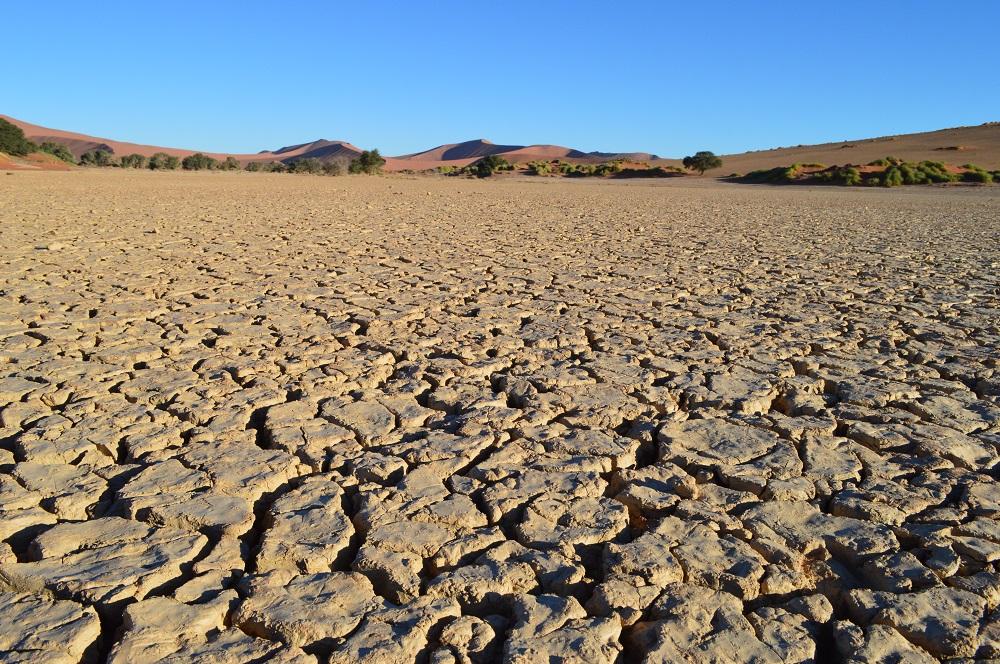
Fossilized dinosaur footprints have been formed in similar clay pan environments long ago. The mud is imprinted when it is moist and then if it is left undisturbed long enough it will fossilize. In this manner, it can be preserved for future generations to observe.
Fossilized footprints of a modern man or antelope would also form under similar conditions. Then millions of years later they could be discovered as evidence of prehistoric life!
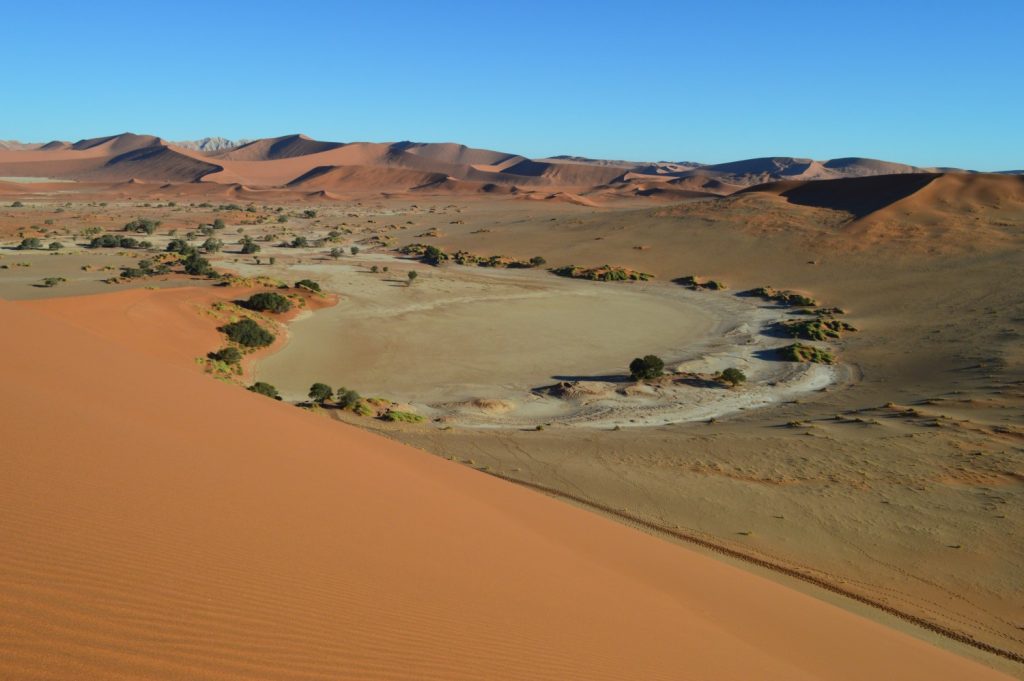
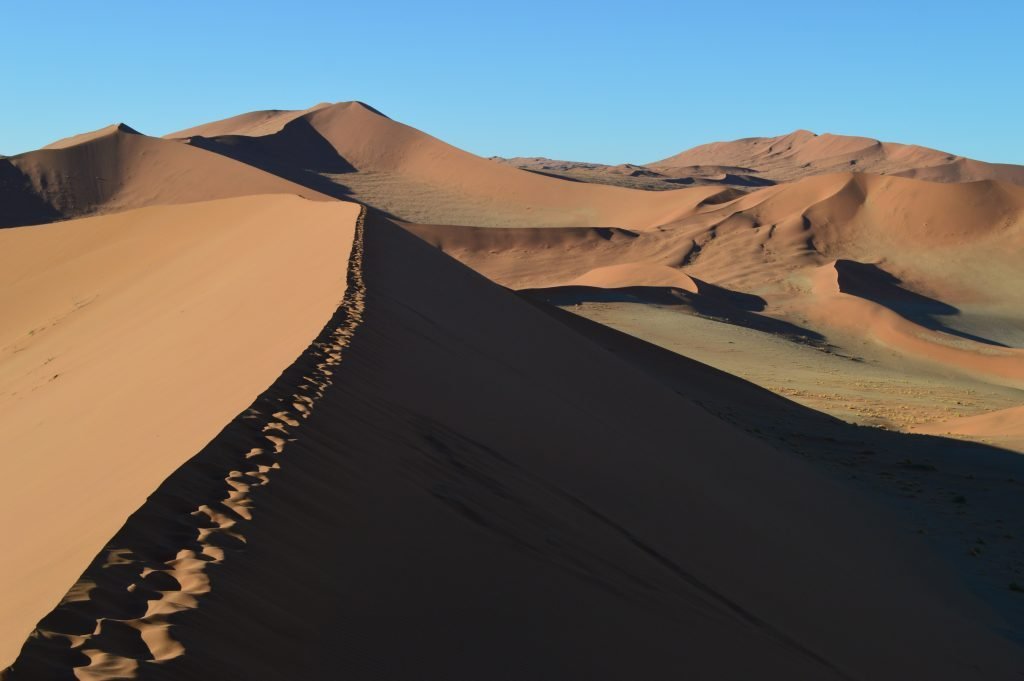
Disappearing Rivers at Sossusvlei National Park
Historically, the Tsauchab River used to flow all the way to the Atlantic Ocean during wetter historical periods. However, in present day, it is only an illusion that the Tsauchab River stops flowing at Sossusvlei. Indeed, fresh water from the Tsauchab River still makes it all the way to the Atlantic Ocean using underground passage over the Tsondab Sandstone. Traces of fresh water have been found Meob Bay on the Namibia coastline.
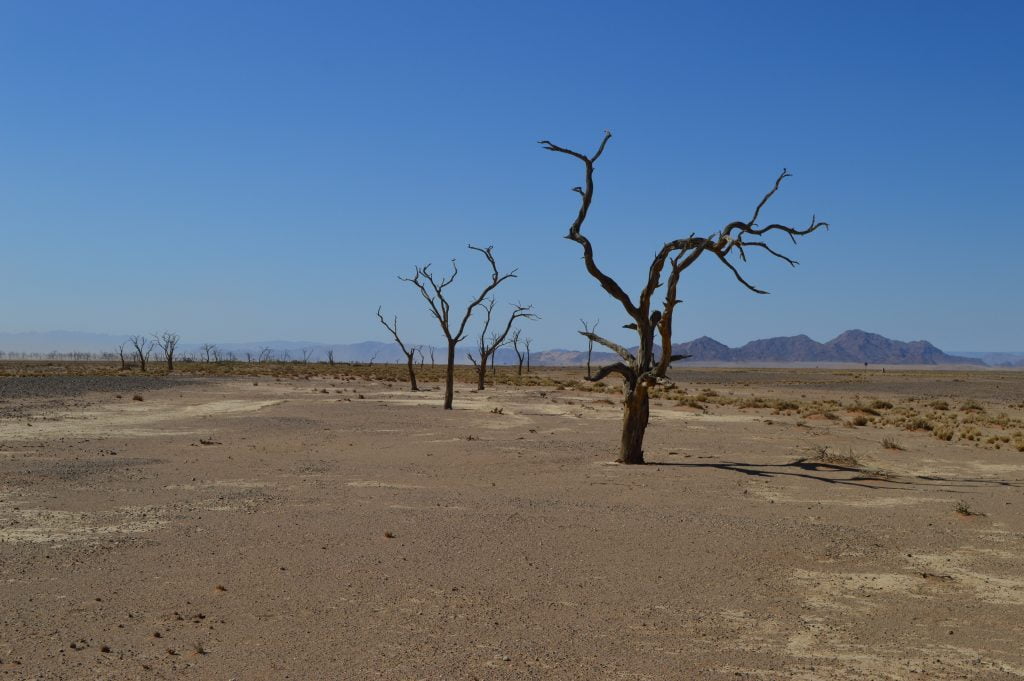
Many of the camel thorn trees are now only skeletons due to the sinking and shifting pathways of the underground water levels. In previous years, they were kept alive by the flows of the Tsauchab River.
The flow levels of these underground rivers are unfortunately receding as the climate becomes more arid. Also, the human population continues to draw down the water table in the surrounding areas. This is evidenced by the dead camel thorn trees that are visible from the road while traveling into the Sossusvlei pan.
During wetter periods the underground water table was higher and kept the trees alive. However, with the receding water table many of the trees have now died. There are only skeletons which add a very brilliant desert ambience to this area.
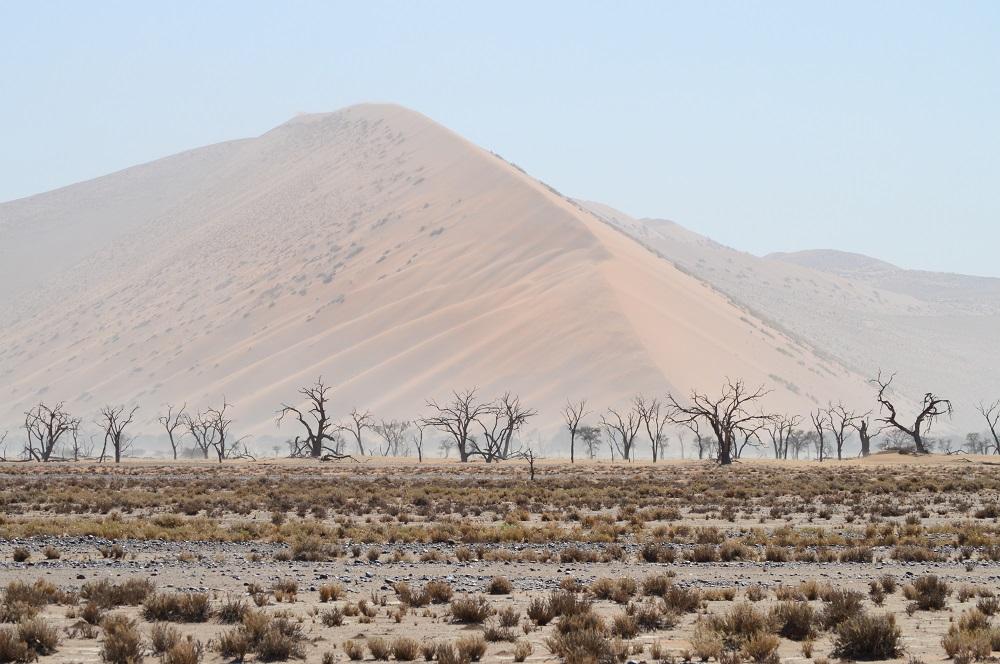
Unique Wildlife Attraction at Sossusvlei National Park
The wildlife habitat provides very little water and the inhabitants must be well adapted to the arid environment. A primary source of moisture is coastal fog from the Atlantic which does drift into the area. As a result, this provides some moisture that permits the survival of vegetation and animals. This unique desert life would otherwise perish without it.
Animals that we encountered included ostrich, oryx (also known as the gemsbok), bat eared fox and also the ubiquitous springbok.
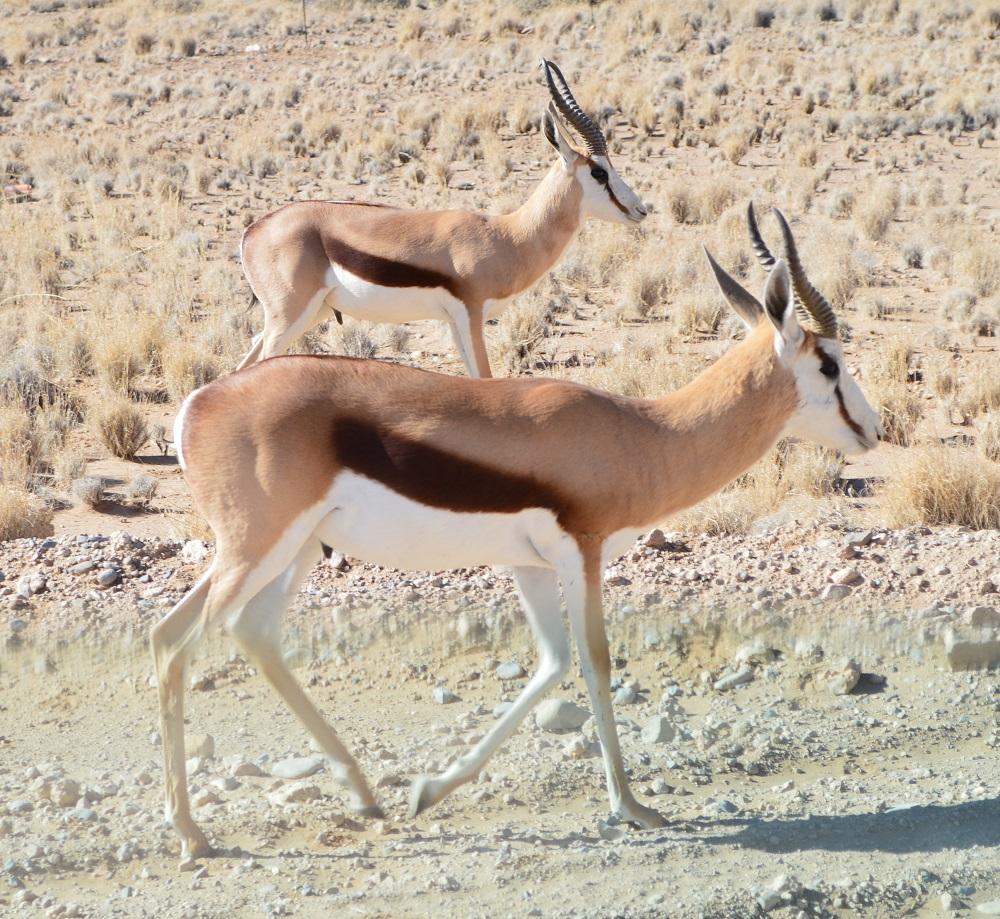
The Oryx
The habitat of the oryx can be found in Southern Africa, East Africa and also in Arabia. Additionally, they can survive for long periods of time without water and live in herds of up to 600 animals.

The oryx we saw were solitary. However, they are majestic animals and both male and female oryx have the long horns. Additionally, they are known as ferocious fighters and have been known to kill lions.
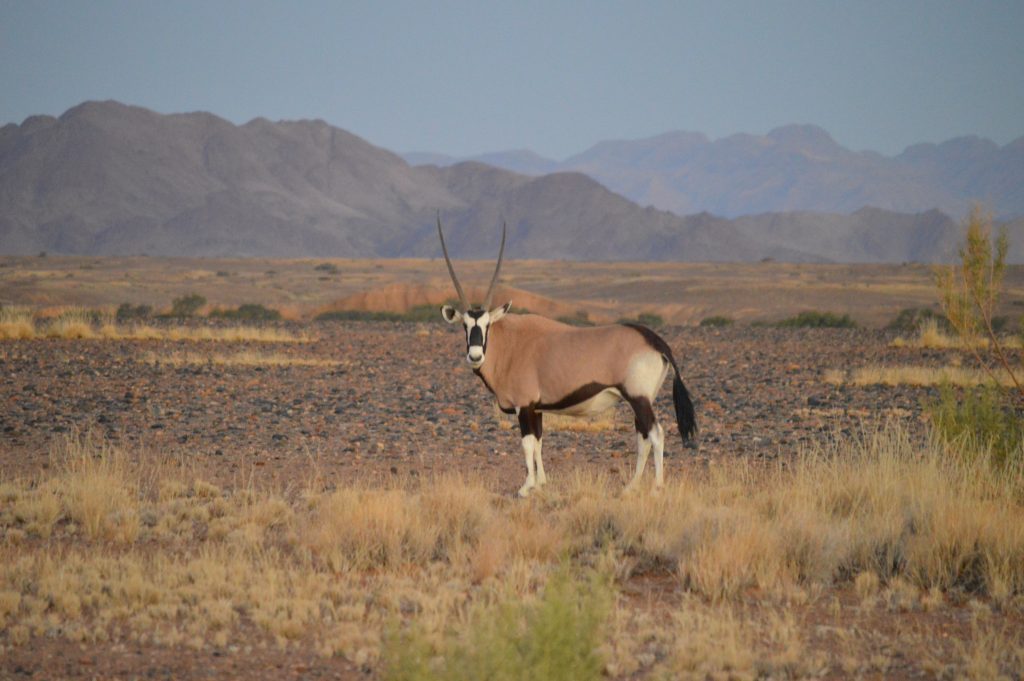
The Bat Eared Fox
The bat eared fox is primarily an insectivore. Its habitat in Southern Africa ranges from Southern Angola and Zambia, through Namibia and into South Africa. Additionally, its main food source is the harvester termite. However, it will also eat beetles and mice if it can catch them.

This unique animal uses its large ears and a fine sense of hearing to find its prey. Additionally, the large ears of the bat eared fox can be used for “thermoregulation”, a method of regulating body temperature.
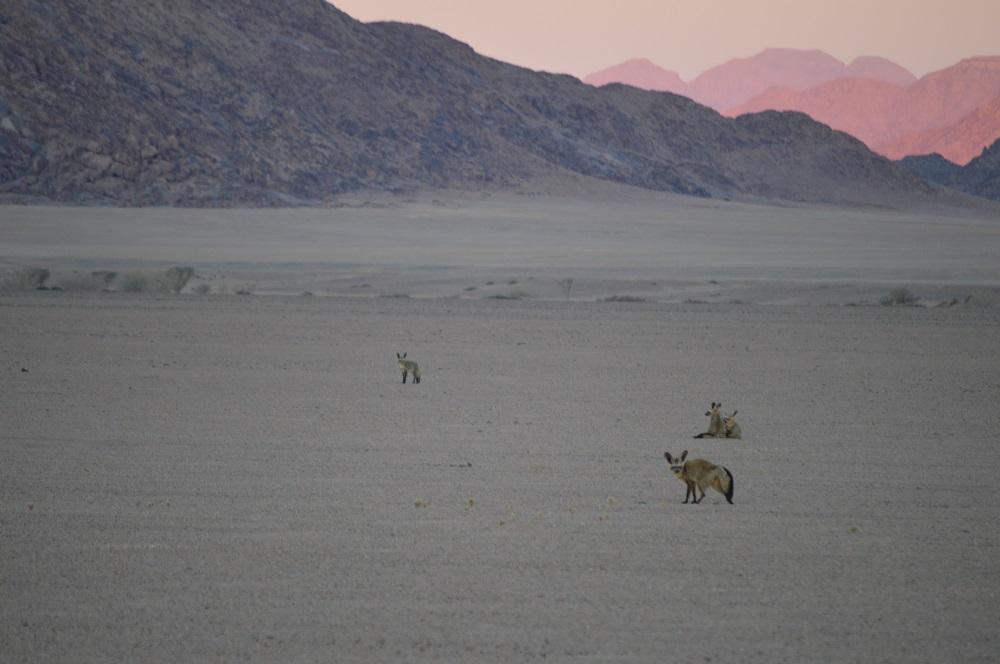
The Harsh Winds at Sossusvlei National Park
The winds of Sossusvlei sand dunes have two effects. They can make travel and survival in the Namib Desert nearly impossible and also create infinite beauty in a harsh desert environment. They do this by carving out the desert landscape.
We had the opportunity to experience both of these extreme phenomenon during our visit to Sossusvlei National park. This is because on the first day, the weather was idyllic, however on the second day a sand storm had moved into the area and Sossusvlei pan had become inaccessible.
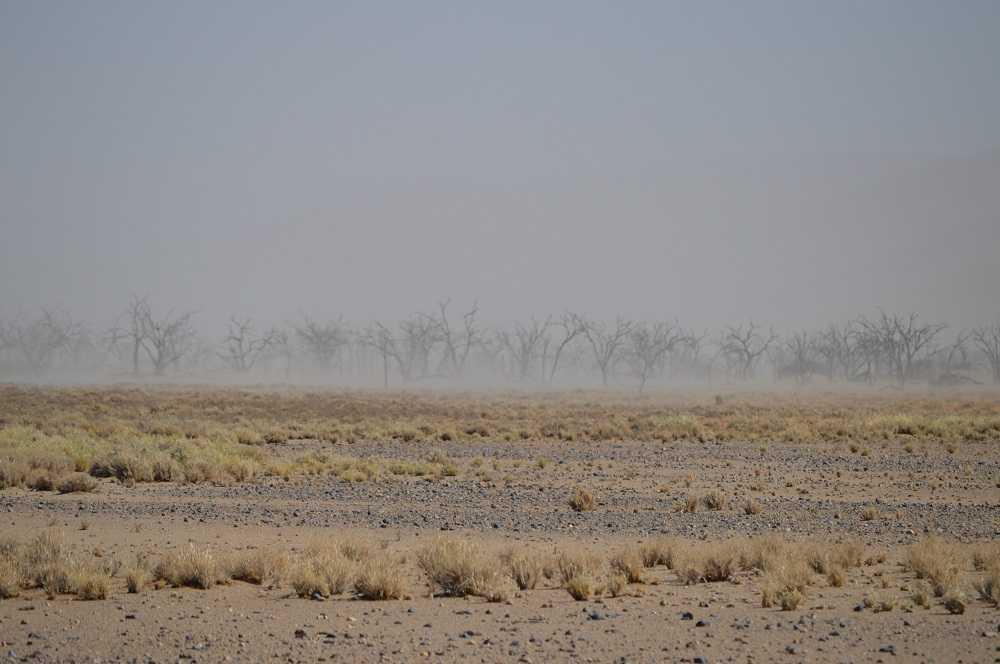
However, it is the wind that moves the sand and creates the giant Sossusvlei sand dunes that tower over this landscape. The wind also creates the finite details that add the finishing touches.
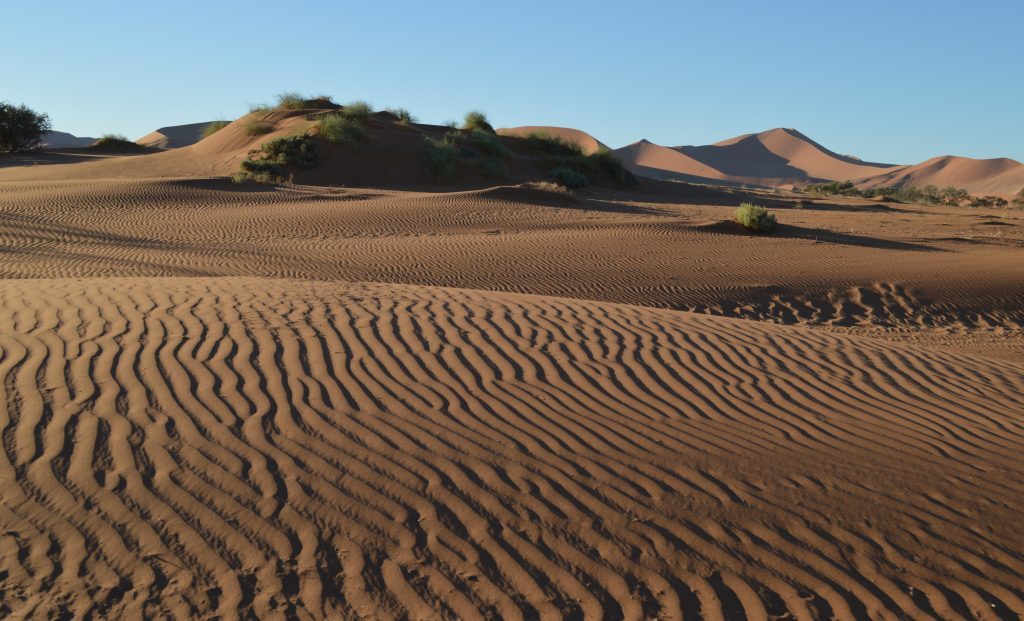
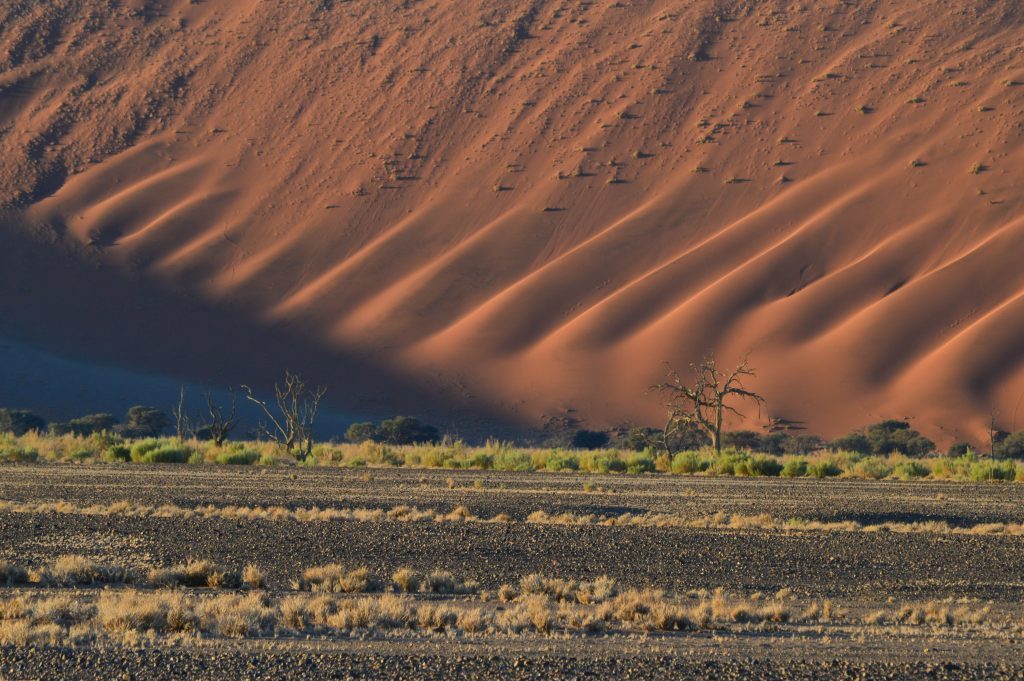
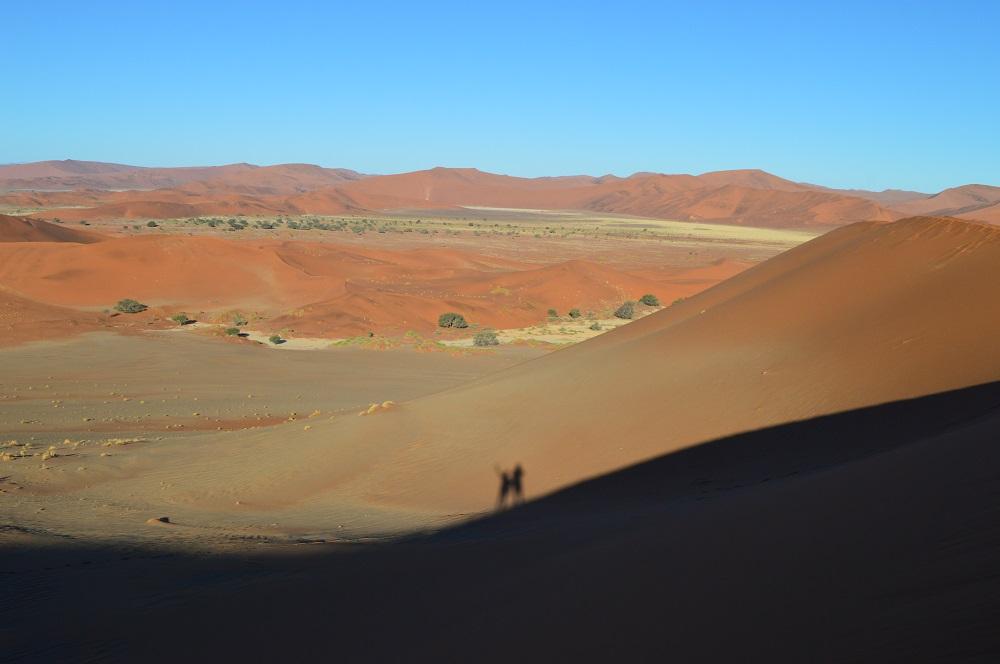
Namibia – Fascination of Geology
A Travel Handbook
Nicole Grunert

